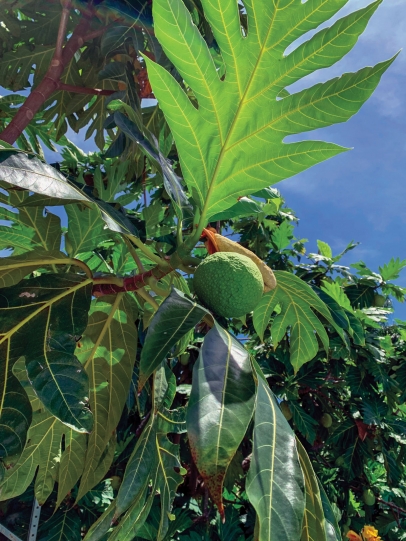How Do I Protect My Plants from the Cold?
When our normally balmy winter temperatures dip into the 40s, it’s time to protect your fruit trees from harm. Ultra-tropicals, like rambutans, pulsans and mangosteens will generally not survive a freeze, even when you use cold protection. That’s why they’re only grown in greenhouses or protected areas. Breadfruit and guanábanas (soursops) will get damaged by temperatures above freezing, but have fared better in the past years due to warmer temperatures. Most other subtropical fruit trees like mangos, avocados, canistel, lychee, longans and mameys will survive a prolonged freeze if they’re protected using the methods described below.
Several factors, besides the species of fruit, can help predict whether your trees may be in danger when cold temperatures hit. If your tree is planted in a low area, cold air will pool there, and temperatures will be lower in that spot. Healthy trees that are dormant will fare better than trees that are putting out new growth. Trees are more likely to be dormant if they haven’t been fertilized or pruned going into the winter. And older trees will survive a freeze better than younger trees.
If a freeze is on its way, there are a few ways you can protect your trees. First, soak the area around the tree with water several days before the freeze hits, not the day of the freeze. The water will hold and release heat during the freeze. You can also wrap the trunks of your trees with insulation and tie it in place. Have a thermometer and monitor it through the night. Start irrigation before the temperature hits 32°F, around 36°F, and it must hit the trunk or cover as much of the plant as possible. Water releases some heat as it is pulled from the ground and when it turns from water to ice. This heat is just enough to encase the tree in ice, and keep it at 31-32°F. This will keep most subtropical fruit trees alive. Don’t turn off the water until the threat of the freeze has passed and the temperature hits 40°F.
For homeowners looking to protect seedlings, a wrap would be the best way to go – anything that can insulate the plant from the coldest temperatures. I have seen growers actually use insulation held in place by zip ties. Burlap would help, too.
After a freeze, you may see some bark splitting or twig death. You may also see leaf wilting or browning. The leaves may die and stay on the tree or drop off. If they drop off, this is a good sign that the branches are alive and active.
Don’t prune right after a freeze. It may be tempting to prune out dead areas of your tree, but you might cut into the live wood. The dead leaves may also protect the rest of the tree if there’s a second freeze. Don’t prune until two to six months after winter has passed. If you have significant leaf damage, don’t irrigate at your normal rate because the trees will not be able to take up the same amount of water.





